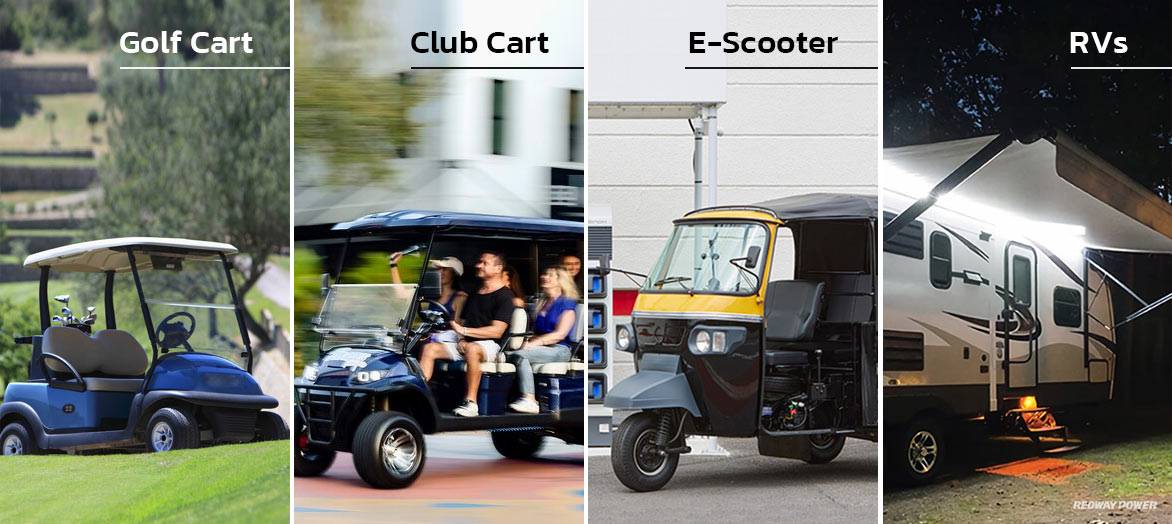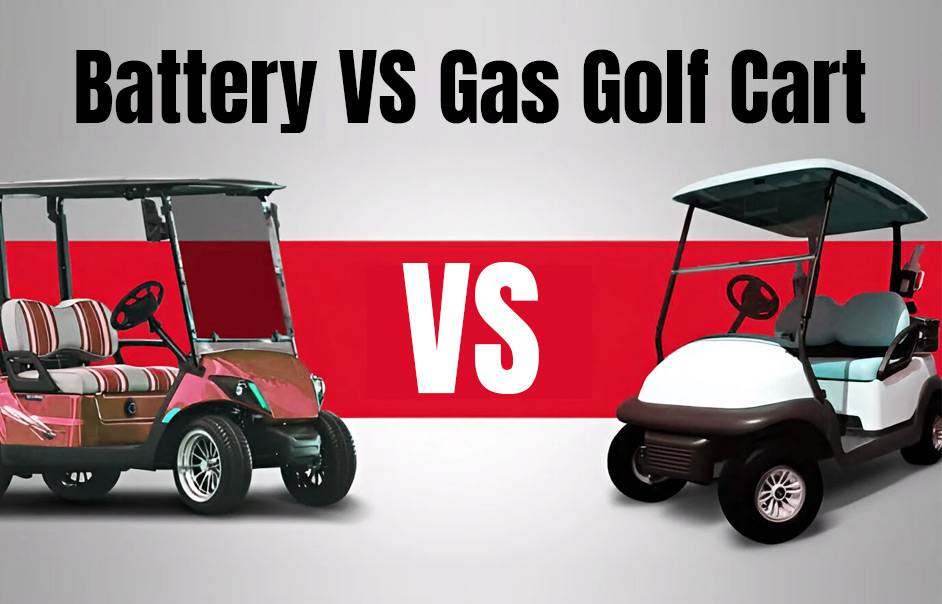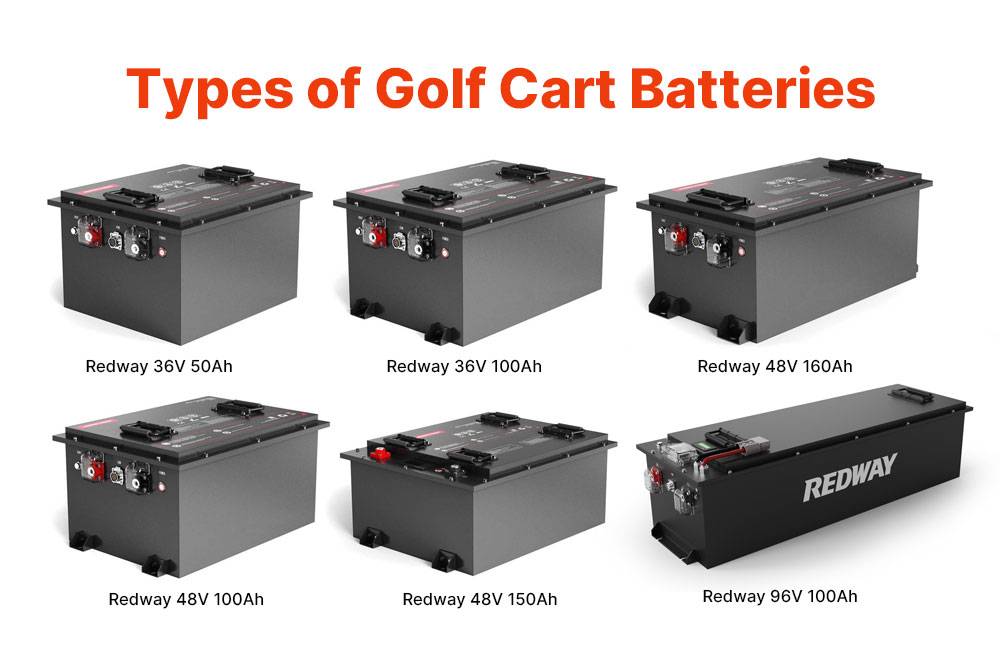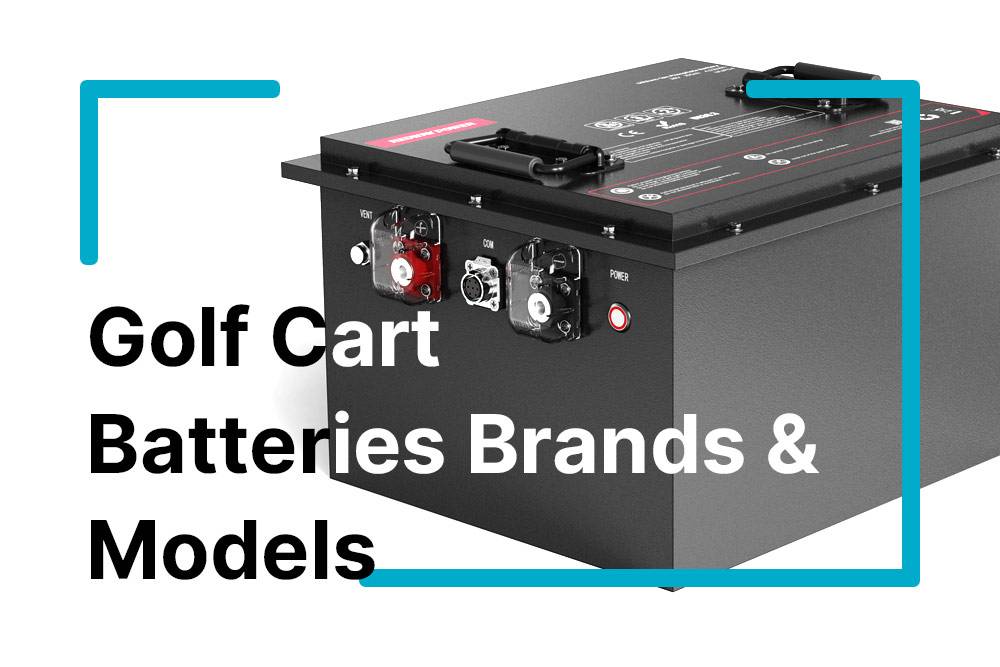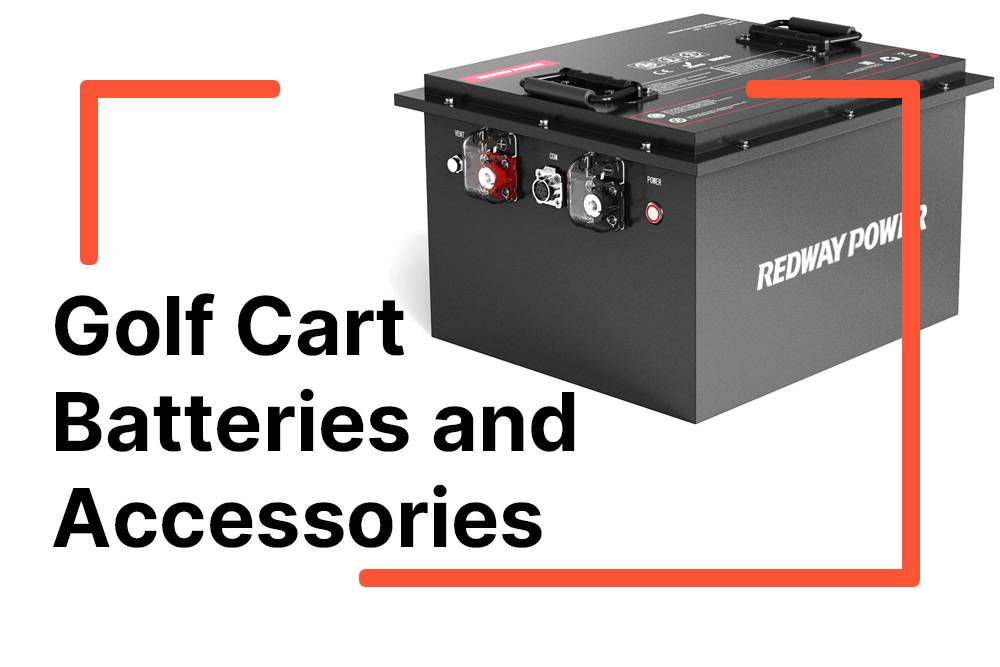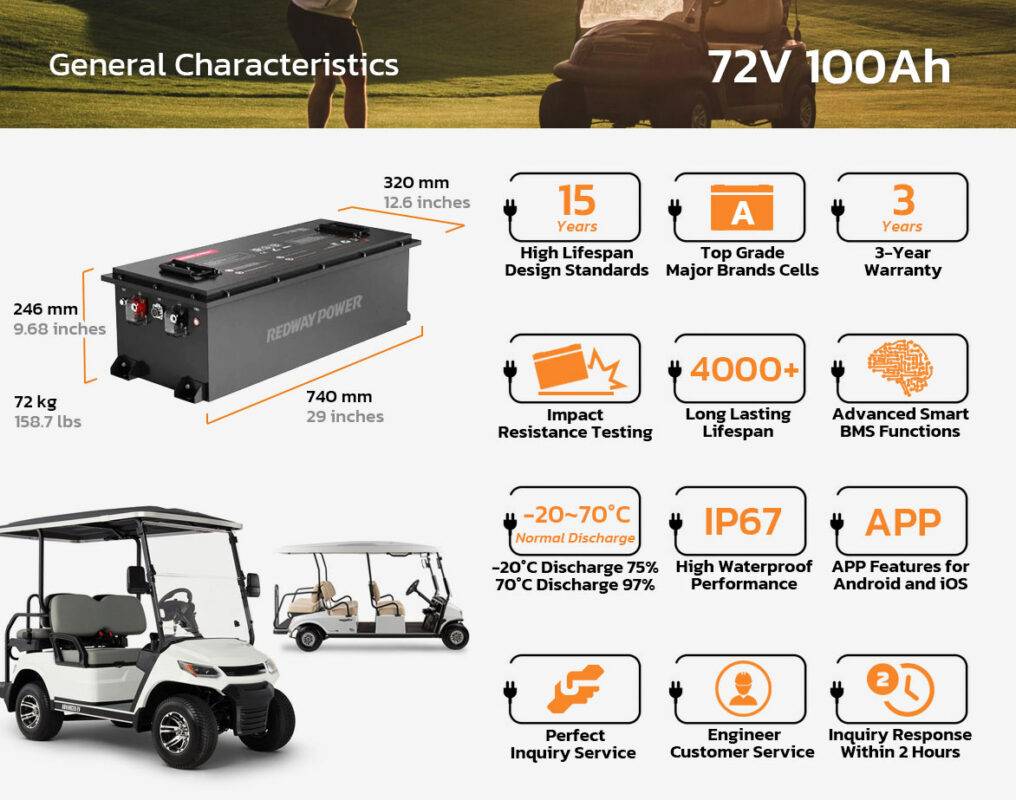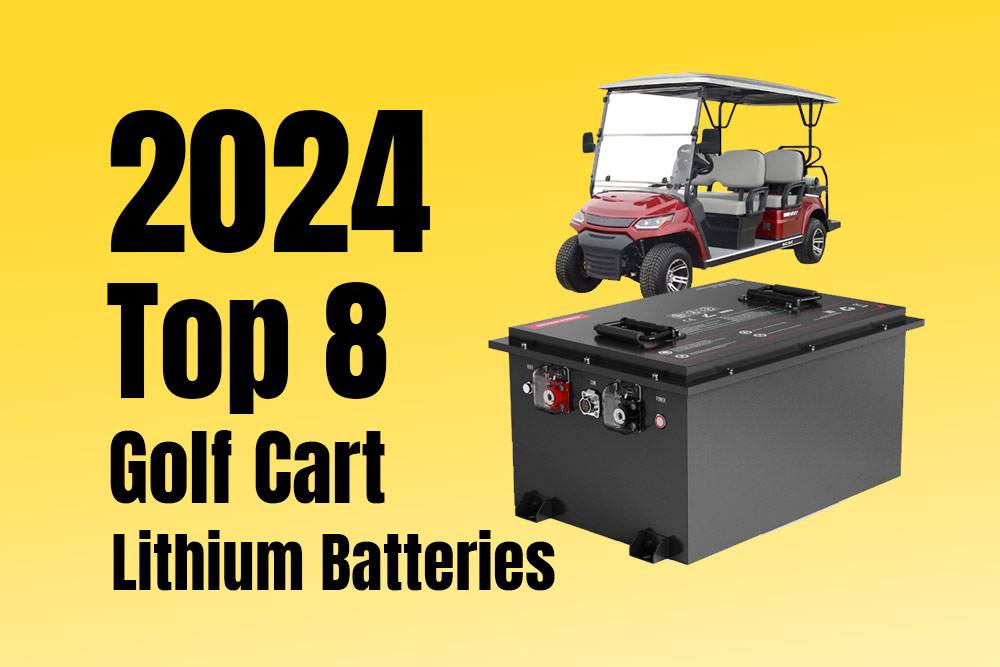Deep cycle golf cart batteries, such as flooded lead-acid, AGM, and lithium-ion batteries, provide steady energy output for extended periods. Factors to consider when selecting a battery include voltage, ampere-hours (Ah), maintenance requirements, and battery type. Proper maintenance and choosing the right battery enhance golf cart performance.
Understanding Deep Cycle Golf Cart Batteries
Golf cart batteries are deep-cycle batteries designed for prolonged energy supply. They can be discharged and recharged repeatedly without losing performance. Types include flooded lead-acid (FLA), absorbent glass mat (AGM), and lithium-ion. AGM batteries are maintenance-free and resistant to temperature fluctuations, while lithium-ion batteries offer longer run times. Factors affecting battery life include capacity, power consumption, and battery type. Understanding these characteristics helps make informed decisions about golf cart power sources.
Anatomy of a Deep Cycle Battery
Deep cycle batteries, unlike standard batteries, are built to withstand numerous discharge and recharge cycles. They consist of thicker lead acid plates which allow for this deep discharging without damaging the battery’s lifespan.
- Plates: The lead acid plates are robust, designed to provide stable power over long periods.
- Electrolyte Solution: In flooded versions, the electrolyte solution submerges the plates, requiring periodic water top-ups to maintain the proper acid level.
The design of a deep cycle golf cart battery facilitates repeated cycles of deep discharging down to 20% or lower before needing a full recharge. This characteristic differentiates them from shallow cycle batteries, which are intended for short bursts of high-energy output.
Types of Golf Cart Batteries
Golf carts commonly use three types of batteries: flooded lead-acid, AGM (absorbent glass mat) lead-acid, and lithium iron phosphate (LiFePO4). Flooded lead-acid batteries are affordable but require regular maintenance. AGM batteries are maintenance-free and resistant to temperature fluctuations. Lithium-ion batteries offer longer run times and faster charging. When replacing batteries, follow manufacturer guidelines for safety and performance.
Golf Cart Battery Specifications
When considering golf cart batteries, it’s vital to understand their specifications, particularly voltage and capacity, as these directly impact the battery life and cycle life.
Voltage and Capacity of Golf Cart Battery
Golf cart batteries come in different voltages: 6, 8, or 12 volts. Fully charged voltages are around 6.37V, 8.49V, and 12.73V. Battery capacity for a 12V class is approximately 1.8 kWh. Golf carts usually need a 36V (six batteries) or 48V (eight batteries) system. Ensure the battery voltage matches your cart’s electrical drive system (36V or 48V) for proper operation.
Comparing Battery Life and Cycle Life
Battery life refers to the overall lifespan of a battery, influenced by maintenance, quality, and usage. Cycle life represents the number of charge-discharge cycles a battery can endure before its capacity decreases. Deep cycle batteries, like those in golf carts, have a higher cycle life than regular car batteries. Lithium-ion batteries generally offer more cycles than lead-acid batteries. Proper care and usage are essential for maximizing battery life and cycle life.
Installation and Maintenance
Proper installation and consistent maintenance are crucial for the performance and longevity of deep cycle batteries in golf carts.
Proper Installation Techniques
When installing golf cart batteries, it is essential to connect them securely and in the correct configuration. For example, when dealing with a 48V 2020 EZGO RXV Golf Cart, it’s necessary to remove the old batteries and install the new ones ensuring all connections are clean, tight, and correctly arranged to match the golf cart’s voltage requirements. Wear safety equipment and ensure the vehicle is turned off before beginning the installation process.
Routine Maintenance and Care
Regular maintenance of golf cart batteries can significantly improve their lifespan. According to guidelines provided by Interstate Batteries, it is important to adjust the charging voltage according to temperature fluctuations. For example, a change of 0.0028 volts per cell for every 1 degree Fahrenheit below 77º F should be added to the charger voltage setting. Additionally, watering flooded batteries regularly, monitoring for physical damage, and avoiding exposure to extreme temperatures as suggested by Continental Battery, ensures that the batteries maintain optimal performance and do not deteriorate prematurely. It is recommended to keep batteries older than four years or those under heavy use conditions under close scrutiny for potential replacement.
Selecting the Right Batteries for Your Golf Cart
When equipping a golf cart with new batteries, one must consider the cart model, battery type, and intended use. Selecting the correct battery pack not only powers the cart effectively but can also contribute to the longevity and reliability of the vehicle.

Battery Packs for Different Golf Cart Models
Battery packs for golf carts vary depending on the model and voltage requirements. Common options include 6-8 volt packs for electric carts, 12 volt lithium batteries for improved performance and minimal maintenance, and flooded lead-acid batteries that require regular upkeep. Consider your cart’s specifications and consult the manufacturer for the best choice.
Additional Considerations and Purchase Tips
When opting for golf cart batteries, consumers should not only assess the battery specifications but also examine warranty terms and seek out reputable manufacturers. It’s imperative to ensure that the chosen batteries deliver optimal performance and come with reliable support.
Warranty and Manufacturer Support
Most top-tier golf cart batteries come with a warranty that can range from one to several years, assuring buyers of a replacement or repair should defects occur. It is essential to call the manufacturer or visit their website to understand the specifics of the warranty. Checking the warranty period and what it covers provides insight into the manufacturer’s confidence in their product and their commitment to customer support.
- Warranty Duration: Always check for the length of the warranty as it can significantly vary between manufacturers.
- Support Services: Access to customer service for technical guidance or claim filing is crucial. Make sure you can easily contact support through a call or their website.
Finding the Market’s Best Batteries
To procure the market’s best batteries, thorough research is needed to identify the most powerful batteries that also promise longer battery life. A reliable metric to consider is the cycle life, where high-quality deep cycle batteries offer around 1200 cycles. Other factors include the MSRP (Manufacturer’s Suggested Retail Price), though market prices can fluctuate, so it’s wise to look for value over just the lowest price.
- Battery Life: Seek out batteries known for longevity and performance, capable of sustaining 1200 cycles or more.
- Research: Investigate expert reviews and consumer ratings for insight into battery efficacy and reliability.
Leveraging this information when shopping for golf cart batteries will guide buyers toward a purchase that balances quality with cost-effectiveness, backed by a solid warranty and manufacturer support.
Enhancing Golf Cart Performance
Golf carts with optimized batteries provide superior performance and extended run time. Advanced battery technology, such as Absorbent Glass Mat (AGM) batteries, is crucial for high efficiency.
Upgrades and Accessories
To improve the performance of a golf cart, investing in quality batteries is essential. They look for AGM batteries because they offer better reserve capacity, which refers to the number of minutes a fully charged battery can deliver a specified current before falling below a set voltage. This type of battery is also beneficial for other applications, such as a scissor lift or floor scrubber, due to their durability and ability to discharge deeply without damage.
Accessories that can enhance a golf cart’s performance include:
- Voltage Reducers: These allow for more consistent power delivery, ensuring that all accessories run at optimal levels.
- High-Efficiency Solenoids: Upgrading the solenoid can lead to better energy flow and improved response times.
- Heavy-Duty Cables: Replacing standard cables with heavier gauge options reduces resistance, allowing for increased power and enhanced run time.
Golf cart owners should consider AGM batteries for their maintenance-free nature and spill-proof design, leading to less downtime and better longevity. A well-executed upgrade strategy results in a golf cart that not only performs better but also lasts longer.
Frequently Asked Questions
In this section, you will find detailed answers to some of the common concerns regarding the care and maintenance of deep cycle golf cart batteries.
How do you properly maintain deep cycle golf cart batteries?
Proper maintenance is essential for extending the life of deep cycle golf cart batteries. Steps include identifying failing batteries, cleaning terminals with a baking soda-water solution, inspecting battery cells, and charging batteries overnight. Test voltage using a hydrometer or multimeter. Following safety precautions and consulting manufacturer guidelines is important. Regular maintenance ensures optimal battery performance and longevity.
What is the average lifespan of deep cycle golf cart batteries?
The average lifespan of a deep cycle golf cart battery is typically between three and six years. Factors such as usage, maintenance, and brand quality can affect battery life. With proper care, some batteries may last up to ten years, while others may only endure three years. Regular maintenance, proper charging, and monitoring water levels can help maximize the battery’s longevity.
Can you interchange different voltage batteries in a golf cart?
No. It is not recommended to interchange different voltage batteries in a golf cart. Mixing different voltages can cause uneven power distribution, charging issues, and impact battery life. Golf carts are designed for specific voltage systems (e.g., 36V or 48V), and using batteries of the same voltage and type ensures optimal performance and safety. Always stick to batteries that match the required voltage for your golf cart.
What are the signs that a golf cart battery needs to be replaced?
Signs that a golf cart battery needs replacement include slow charging times, reduced distance coverage, slower acceleration, and physical signs like leaking acid, bulging, or corrosion. Prompt action is important to prevent complete battery failure. If you notice any of these signs, it may be time to consider replacing your golf cart battery.
How do differences in amp hours affect the performance of golf cart batteries?
The performance of golf cart batteries is influenced by their amp hour (AH) rating. Higher AH means longer run time and more power for the cart and accessories. Voltage also plays a role, as multiplying voltage by AH gives you watt hours (Wh), indicating battery power. Standard golf carts with 36V batteries typically offer a range of 20-25 miles with a 72Ah battery and 30-35 miles with a 105-108Ah battery. Choosing the right AH ensures optimal performance for your golf cart.
What is the proper way to store deep cycle golf cart batteries when not in use?
To store deep cycle golf cart batteries properly when not in use, one should fully charge the batteries, disconnect them to prevent parasitic drain, and keep them in a cool, dry place. For long-term storage, it’s important to monitor and maintain the charge to avoid deep discharge.
Can lithium batteries series up to 120 to 150 volts for a golf cart that requires 120 volts?
When upgrading a golf cart to lithium batteries, you can achieve a 120-volt system by connecting multiple lithium cells in series. However, it’s important to note that the specific voltage requirements and limitations of the golf cart should be considered. It is recommended to consult with a professional or the golf cart manufacturer to ensure safety and compatibility with the desired voltage configuration.
Can lithium batteries be used in a 72V system with Delta Q charger compatibility?
When using lithium batteries in a 72V system with Delta-Q charger compatibility, it’s important to note that Delta-Q chargers require a Battery Management System (BMS) for monitoring individual cells. This ensures safety and prevents potential issues. Make sure to integrate a proper BMS for safety and compatibility when considering lithium batteries for your 72V system.
What are the recommendations for replacing 6 8-volt lead-acid batteries in a 2014 EZGO TXT 48 with lithium batteries?
When replacing the 6 8-volt lead-acid batteries in your 2014 EZGO TXT 48 with lithium batteries, consider using LiFePO4 (Lithium Iron Phosphate) batteries for longevity, safety, and performance. Ensure compatibility with your golf cart’s voltage (usually 48V). Remove the old batteries and install the new lithium batteries using the same wiring. Choose different amp-hour (A/H) ratings based on your desired range. Prioritize safety during installation and enjoy the benefits of lithium batteries in your golf cart!
What are the battery and charger recommendations for an EZGO Freedom golf cart that needs new batteries and a charger?
When looking for battery and charger recommendations for your EZGO Freedom golf cart, consider using LiFePO4 batteries for their longevity, safety, and performance. Ensure the batteries are compatible with your golf cart’s voltage (36V or 48V). Choose a 36V or 48V charger specifically designed for EZGO golf carts, considering safety features, user-friendliness, and compatibility with your battery type. Follow proper charging routines for optimal performance. Enjoy your renewed golf cart experience!

